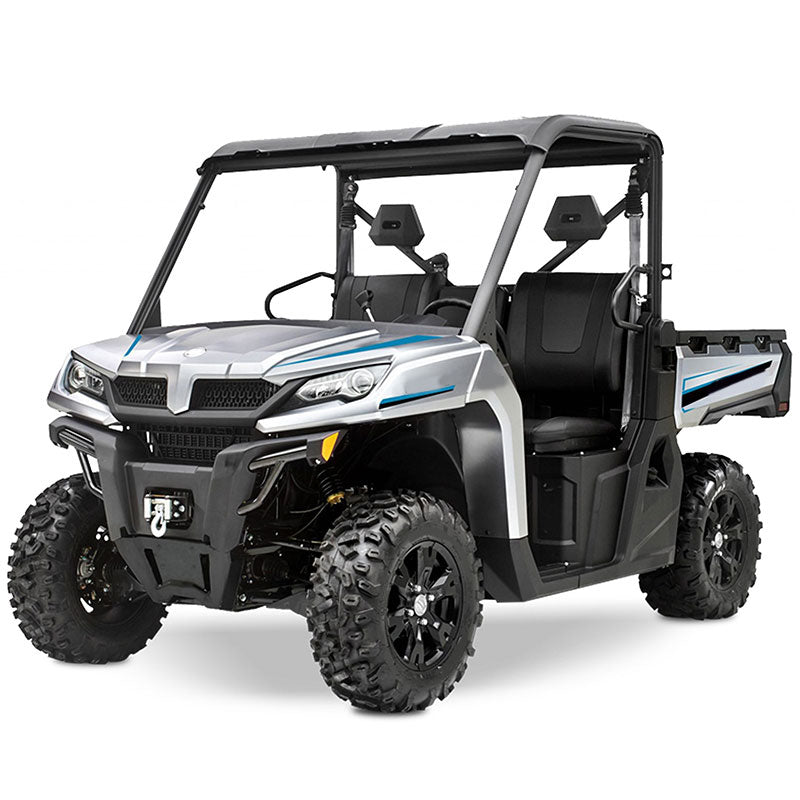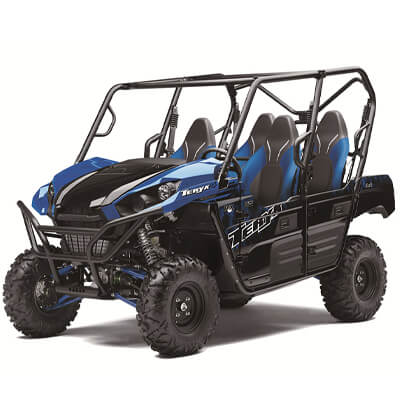Is Half Windshield Better Than Full?
Quick Answer: It depends. Half windshields are lighter, cheaper, provide better ventilation, and are easier to install and maintain. This makes them a good choice for fair weather recreational riding. However, full windshields offer complete protection from debris, weather elements, and extremes of temperature. So they are better suited for working vehicles, cold weather use, or high speed off-road racing where shielding occupants is critical.
Introduction
Windshields are an integral safety component in utility terrain vehicles (UTVs). They protect riders from wind, debris, rain, insects, and other hazards when driving off-road. UTV owners can choose between two main windshield types: half windshields that cover the lower portion of the vehicle or full windshields that enclose the entire cab. But which is the better option? This article analyzes the key differences, advantages, costs, and use cases to help determine if half or full windshields are more suitable depending on the user and conditions.
Understanding the Role of Windshields in UTVs
Windshields are essential components in utility terrain vehicles (UTVs) that serve critical functions beyond just providing shelter from the elements:
- Safety - Windshields act as a barrier to deflect airborne hazards like branches, rocks, mud, and sharp debris that could otherwise strike operators and passengers at high speeds while driving off-road, leading to injuries or hospitalization. Full windshields offer more complete coverage of the cockpit, preventing projectiles from impacting riders from any angle.
- Visibility - Built-in windshield wipers keep the glass or plexiglass clear by sweeping away splattering mud, fine dust, and water droplets that would otherwise obstruct the vision of the terrain ahead. Maintaining a clear field of view allows drivers to spot obstacles early and react appropriately to avoid accidents.
- Comfort - Sealed windshields provide a respite from the biting cold, windchill, and frigid temperatures that can quickly sap body heat in open cockpit UTVs. This expands usability across fall, winter, and early spring applications. Insulated full windshields with glass optimize interior warmth by containing engine heat and riders' own body warmth.
- Performance - Aerodynamically contoured windshield frames minimize drag and turbulence that would otherwise reduce acceleration and top speed while wasting fuel. Angled half windshields can take advantage of this effect while still allowing airflow into the lower cockpit.
More helpful ideas about utv windshields: Should I Put a Windshield on My UTV?
What Are Half Windshields and Full Windshields?
Half windshields: These models extend upwards at an angle beginning right above the hood line and continue up to approximately chest or shoulder level on the average seated operator. Half windshields cover only the lower portion of the cockpit seating area, leaving riders' upper bodies exposed to the elements from the waist or mid-torso and above. Without enclosing the entire canopy, half windshield versions weigh noticeably less than full windshields and carry a lower purchase cost.
Full windshields: As the name denotes, these fully enclose and seal off the entire cockpit area, providing unbroken shielding from the base of the hood or dash all the way upwards to the overhead cage or roll bars. Full windshields deliver complete protection for operators and passengers from frontal wind, rain, mud, flying debris, and more. The tradeoff is increased weight over open-top half windshields as well as higher initial cost. But for cold weather or adverse conditions, they deliver unparalleled shielding.
Windshields have many dimensions that can be classified, and looking at Polycarbonate vs. Glass Windshields: Which Is Right for Your UTVs? can help you better understand the materials of windshields
Comparative Advantages of Half Windshields and Full Windshields
Here is a more detailed comparison in a table format:
|
Attribute |
Half Windshield |
Full Windshield |
|
Protection Level |
Moderate protection from frontal wind and rain, but leaves sides and top exposed |
Fully enclosed canopy protects from all elements on all sides |
|
Debris Shielding |
Deflects some frontal debris but leaves riders vulnerable from other angles |
Blocks branches, rocks, roost, etc. from every direction of attack |
|
Weather Usage |
Best suited for warmer riding conditions; no insulation to block freezing temps |
Insulated glass and robust seals allow all-weather usage, even in snow and ice |
|
Climate Control |
Open design rapidly vents interior heat to prevent rider fatigue |
Traps heat from engine and exhaust inside enclosed space for winter comfort |
|
Dust Control |
Allows air flow to minimize dust swirling inside cockpit |
Can experience dust pooling from lack of circulation |
|
Rider Exposure |
Riders remain exposed above chest level; Greater airflow for cooling effect |
Completely isolates riders; Reduced airflow but contains heat |
|
Air Circulation |
Maximum frontal and upward air flow for ventilation |
Restricted airflow circulation once doors/seals are latched |
|
Riding Position |
Allows standing for better sight lines and freedom of movement |
Fixed seated position with limited visibility due to roof panel |
|
Other Considerations |
Lower cost; Easier to install; Lighter and faster |
Higher cost; harder to install; Heavier; Buffeting noise; Can fog or collect condensation |
Different User Needs of Half Windshields and Full Windshields
The best windshield match ultimately depends on the UTV's intended uses and owner priorities:
- Recreational Trail Riding - Half windshields afford better outward sightlines when standing and allow flexible body positioning for sporty driving. Their ventilation sustains multi-hour rides in hot weather. For most fair-weather recreational needs, they provide adequate environmental blockage.
- All-Weather Transportation & Work - UTVs used for farm, ranch, and worksite duties need to protect their occupants and payload in all conditions. Sealed full windshields with durable metal or composite materials withstand abuse while insulating passengers.
- Agriculture & Ranch Tasks - Brushed aluminum half windshields handle knocks and scratches when working close vegetation while allowing farmers to quickly enter and exit. Their airflow dissipates tractor exhaust and PTO heat buildup.
- Off-Road Racing - High speeds and aggressive driving make full windshields' complete coverage critical for deflecting bombardment from rocks, ruts, and flying debris. Their strength withstands brutal impacts from accidents and violent crashes.
- Dune Riding - Gliding over a sandy dune landscape requires maximizing traction and acceleration, favoring the minimized weight of half windshields. Standing riders benefit from unobstructed upward visibility when ascending steep towering dune faces.
Installation and Maintenance of Half Windshields and Full Windshields
Installing and maintaining either style of windshield comes down to hands-on time, mechanical skill, and monetary investment:
Half Windshield
- Easier installation - Lightweight metal and polycarbonate half windshields utilize basic DIY tools like drill drivers or wrenches to bolt directly to the roll cage or frame in under an hour.
- Minimal maintenance - Durable powder-coated or stainless steel builds resist corrosion and require minimal upkeep aside from occasional tightening of mounting hardware if subjected to hard impacts.
Full Windshield
- More complicated installation - Sealing full windshields demands precise alignment and extensive disassembly of cab components. This intricate process with specialized fittings often requires professional expertise or guidance exceeding most owners' skill and comfort level.
- Increased maintenance - Integrated doors, hinges, weatherstripping, and full perimeter seals require ongoing adjustments and maintenance when subjected to twisting chassis flex and impacts inherent to off-road use.
- Replacing broken glass - Damaged windshields or scratched plexiglass require inconvenient removal and replacement to restore visibility and weatherproofing. This may necessitate professional assistance.
While simple DIY half windshields only need occasional bolt tightening, fully integrated automotive-style full windshields demand proficient mechanical aptitude to install and maintain leakproof function.Explore more maintenance ways: How to Clean Your UTV Windshields?
Cost Analysis of Half Windshields and Full Windshields
Budget plays an unavoidable role when evaluating half versus full windshield additions:
Half windshield
- Lower initial cost around $150-$350 for powder-coated steel or aluminum versus over $800+ for full windshields before professional labor fees.
- Steel and aluminum materials resist cracking to better handle impacts, while trailing edges simply bend. Easier to tweak or repair.
Full Windshield
- Higher part cost - $800-$2500 depending on size, design, materials (acrylic, polycarbonate, or glass), insulation, and fastener integration sophistication.
- Specialized installations and sealants require higher shop labor fees of up to $1000+ for challenging full windshield changeovers.
- Integrated doors, hinged panels, and molded surrounds can be very expensive to replace after damage.
In addition to the previously mentioned price ranges for half and full windshields, it's crucial to note that the market also offers more budget-friendly alternatives. Some premium retailers, likeStarKnightMT, provide windshields for UTVs at significantly lower prices, around $100 to $200 and their windshields for UTVs still match the durability, impact resistance, and long-term reliability of their higher-priced counterparts.
Conclusion
Evaluating if half or full windshields deliver superior function requires factoring in key considerations covered here surrounding weather protection needs, operating conditions, usage case, desired features, installation complexity, maintenance, and budget. On open side-by-side recreational models, half windshields win out for their simpler integration and adequate shielding paired with better ventilation and freedom of movement around the cockpit at a fraction of the cost. Vehicle duty cycles requiring reliable cold weather or all-weather transport capability benefit most from the uncompromised sealing and insulation of a full windshield. Light-duty, fair-weather recreational riding, and cost-conscious buyers receive excellent utility from affordable half-window solutions, sacrificing only a small degree of protection. In the end, properly matching windshield design to individual priorities and conditions determines if going halfway or all the way makes sense when seeking optimized UTV performance.















Leave a comment